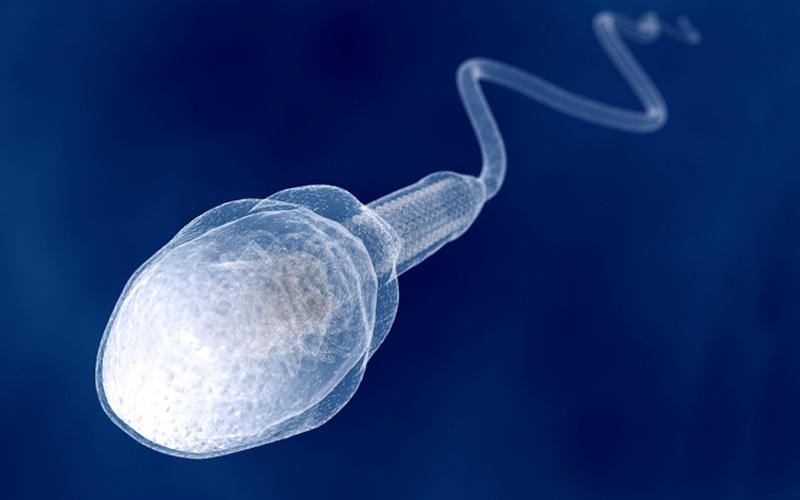UNDERSTANDING THE SPERMOGRAM
The semen is the result of the laboratory examination of the semen. Regardless of the poor quality and quantity of your sperm, Dawasanté experts provide you with a natural herbal treatment to improve the quality and quantity of your sperm. This will allow you to conceive quickly and be more fertile. Click on the image below to discover this natural treatment
We deliver all over the world.
For more information, you can contact our experts on +229 51374202 direct line or by WhatsApp at the same number.
Topic: AKINETOSPERMIA, ASPERMIA, ASTHENOSPERMIA, AZOOSPERMIA, Cryptozoospermia, DYSKINESIA, FLAGELLAR, HYPERSPERMIA, HYPOSPERMIA, AGGREGATES, LEUCOSPERMIA, NECROSPERMIA, Oligo-Asthenoospermia, TOSPEROPERMIA, POLYPERSPATERMIA, TERATOSPERSPATERMIA, TOSPEROPERMIA
I - WHAT IS A SPERMOGRAM?
The spermogram is an analysis that will study the quantity and quality of sperm.
The spermogram is carried out after having collected the sperm in the laboratory and by masturbation.
The spermogram includes:
1 - An analysis of the volume of the ejaculate
2 - A determination of the pH
3 - The study of the mobility of the spermatozoa at the emission of the sperm and after 1 hour and 3 hours
4 - The calculation of the number of spermatozoa
5 - Their vitality
6 - Viscosity
7 - The percentage of abnormal forms observed under the microscope…
In addition, we also evaluate:
8 - The level of isolated flagella and / or lysed spermatozoa
9 - The level of white line cells
10 - The level of other cells (cells of the urogenital tract)
11 - The level of cell fragments
12 - The presence of red blood cells or blood residue
II - REFERENCE VALUES
1 - Quantity
2 to 6 ml
2 - Color
Normally viscous and opalescent white
3 - viscosity
On ejaculation, the sperm coagulates and liquefies in less than 30 minutes at 37 ° C
4 - Number
- From 40 million to 200 million per ml.
- Greater than 15 million per ml and must be greater than 39 million
for the entire ejaculate
5 - Mobility
This is the most important parameter
The mobility standard accepted after 30 minutes of the emission must not be below 80% of motile spermatozoa
- After 1 hour -
We must find more than 50% of motile spermatozoa
that is to say in progressive displacement
- After 3 hours -
We must find at least 30% of motile spermatozoa
Observation
The mobility of sperm is classified into four categories or grades (see below).
6 - Vitality
At ejaculation, the percentage of living spermatozoa must be
equal to or greater than 60% of all spermatozoa
7 - Leukocytes
The number of leukocytes must be less than 1 million / ml
8 - Abnormal forms
- According to the classification of Cohen Bacri
Abnormal forms should not exceed 15 to 20% of the total sperm
- According to the classification of “David”
Abnormal forms must not exceed 30%, of the total sperm
- According to the classification of “Kruger”
Abnormal forms must not exceed 4%, of the total spermatozoa
9 - The pH
It must be between 7.2 to 8
Good to know
The pH is a direct indicator of secretions from the annex glands (acid prostatic secretions and secretions from the seminal vesicles).
10 - Germ cells
Their percentage must not exceed 10%
Germ cells are the basic cells that evolve into the sperm after a complex transformation; a higher level may suggest a disorder in sperm production.
III - INTERPRETATION OF THE RESULTS
Male infertility can be caused:
1 - By poor quality sperm production
2 - By insufficient sperm production
3 - By an anomaly in the transport of these spermatozoa
Spermatozoon and its various abnormalities
IV - THE MAIN ANOMALIES
1 - HYPOSPERMIA
The total volume of the ejaculate less than 2 ml
The causes of hypospermia are varied:
- Technical problem in collecting sperm
- Abstinence
- Secretion deficit
- Retrograde ejaculation…
Good to know
The volume of semen gradually decreases with age without altering the other parameters.
2 - HYPERSPERMIA
The volume of the ejaculate much greater than normal
Hyperspermia and sometimes in connection with an inflammatory or infectious syndrome of the annex glands and more particularly the seminal vesicles.
Important
It can also be due to excessive sexual abstinence.
3 - OLIGOSPERMIA (OLIGOZOOSPERMIA)
It corresponds to an insufficient quantity of spermatozoa in the semen
Very important to know
1 - If the number of spermatozoa is less than 10 million / ml, there is infertility
2 - If the number of sperm is less than 5 million per ml, we speak of severe oligospermia.
4 - POLYSPERMIA
The concentration of spermatozoa greater than 200 million per ml
5 - AZOOSPERMIA
Absence of spermatozoa in the ejaculate
Two types of azoospermia are encountered:
1 - Secretory azoospermia -
Corresponds either to a primary, congenital or acquired testicular disease, or to an acquired congenital hypothalamic-pituitary insufficiency.
2 - Excretory azoospermia -
Corresponds to the presence of an obstacle in the excretory tract (epididymis, vas deferens, ejaculatory ducts).
These lesions can be acquired or congenital.
6 - ASTHENOSPERMIA Sperm
mobility defect
We speak of asthenospermia if at least 40% of the spermatozoa encountered are not mobile.
Sperm mobility is classified into four categories or classes -
1 - Class A -
Fast and progressive spermatozoa (speed> 25 µm / s)
2 - Class B -
Slow or weakly progressive spermatozoa (speed 5 - 25 µm / s)
3 - Class C -
Mobile spermatozoa but without any progressivity (mobility in place)
4 - Class D -
Immobile spermatozoa
 7 - NECROSPERMIA (NECROZOOSPERMIA)
7 - NECROSPERMIA (NECROZOOSPERMIA)
It is characterized by a very high percentage of dead spermatozoa
Necrospermia is often due to microbial infections.
There are two types of necrospermia:
1 - Partial necrospermia -
Corresponds to 42% of the spermatozoa found are dead
2 - Total necrospermia -
Corresponds to all the sperm found in the ejaculate are dead
8 - TERATOSPERMY OR TERATOZOOSPERMIA
It corresponds to an excessive quantity of abnormal spermatozoa
and can reach up to 30%
(see above, abnormal forms).
The main abnormal forms encountered are -
1 - Head abnormalities (less than 35%) -
Microcephaly, macrocephalic, elongated head, irregular head ...
2 - Anomalies of the intermediate part (less than 20%) -
The result from the presence of cytoplasmic remains
3 -Flagellum abnormalities (less than 20%) - Angulated, coiled flagellum ...
4 - Double forms (less than 10%) -
5 - The globozocephalic form -
Characterized by the absence of the acrosome.
The presence of this form is a sign that there is no possibility of fertilization.
9 - ASPERMIA
A total absence of ejaculate
10 - OAT
(Oligo-Astheno-Teratozoospermia)
It is the association of three pathologies and which are: Oligospermia, Astheno-spermia and Teratozoospermia.
11 - AGGLUTINATES
Agglutinates (or adjoining) correspond to a gathering of several spermatozoa living together.
The agglutinates are explained by the presence of living sperm and carriers of anti-sperm antibodies.
The presence of agglutinated spermatozoa should cause the presence of anti-sperm antibodies to be tested.
12 - AGGREGATES
They are to be distinguished from agglutinates because they correspond to the joining of several spermatozoa which have died together.
13 - FLAGELLAR DYSKINESIA
Abnormalities in the movements, speed and trajectory of spermatozoa
14 - LEUCOSPERMIA
Leukocytosis at more than 1 million / ml
This leukospermia suggests an infection
15 - AKINETOSPERMIA
All spermatozoa are immobile
16 - CRYPTOZOOSPERMY *
Absence of spermatozoa observed in a drop of sperm under the microscope
A thorough search in the whole of the sperm allows one to find some spermatozoa (less than 100,000 spermatozoa in the whole of the ejaculate).
There are two main cryptozoospermia -
1 - Severe cryptozoospermia
The number of spermatozoa found is less than 10,000
2 - Moderate cryptozoospermia,
The number of spermatozoa is greater than 10,000
* Important -
Cryptozoospermia is a new entity which has only gained interest since the appearance of the ICSI technique (Intra Cytoplasmic Sperm Injection) because with this technique, just a few spermatozoa ejaculated or taken from epididymis or testis, and regardless of sperm concentration and mobility, to achieve fertilization and pregnancy.
The appearance of the new technique of IMSI (Intra Cytoplasmic Morphologic Sperm Injection) which makes it possible to make a very thorough selection of the best spermatozoa in the ejaculate and to significantly increase the chances of obtaining fertilization and pregnancy from cryptozoospermic sperm.
17 - HEMOSPERMIA
It is the presence of blood in the sperm
V - APPENDIX
Seminal biochemistry -
It makes it possible to pose different types of pathology either having an origin of an obstacle being on the seminal tract, or of origin by malformation of the ways of excretion of the spermatozoa and more particularly at the level of the epididymis, duct vas deferens, seminal vesicles, prostate.
The main substances of dosed are carnitine, alpha-glucosidase, citrate, acid phosphatases, zinc, fructose, etc.
We deliver all over the world.
For more information, you can contact our experts on +229 51374202 direct line or by WhatsApp at the same number.


